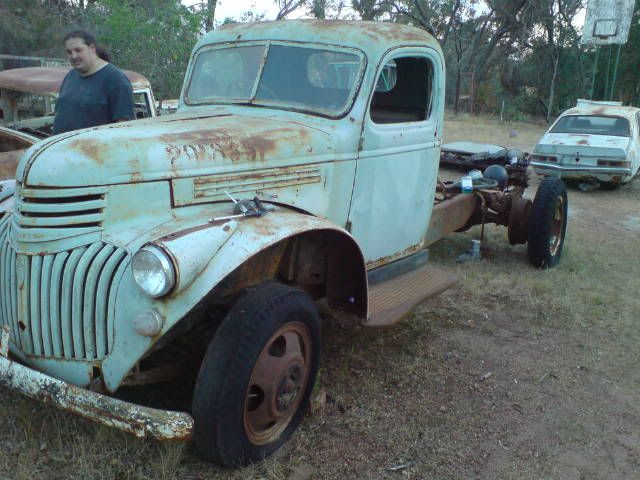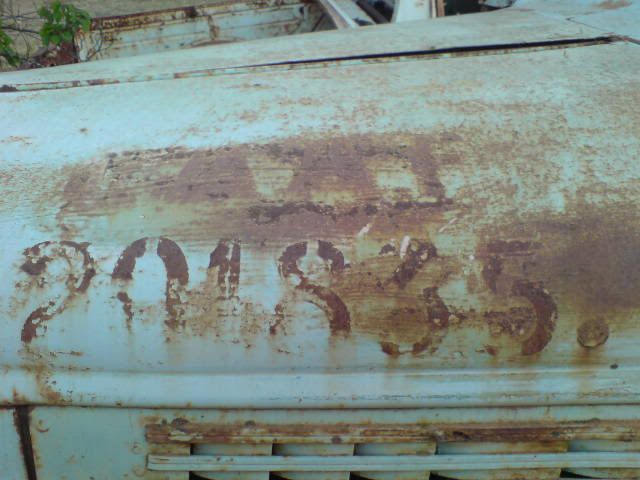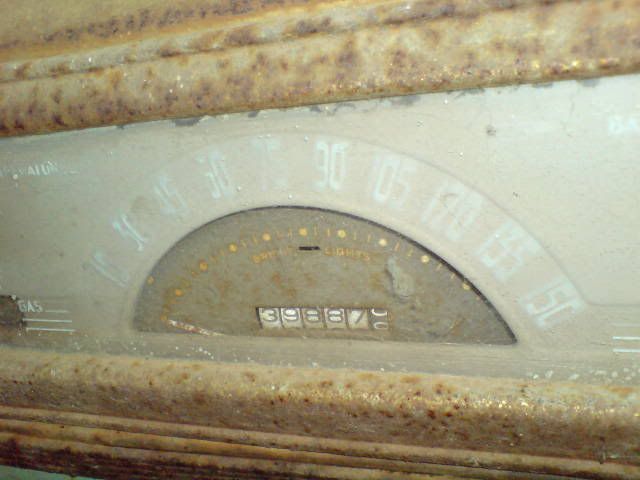
 |
|
#1
|
||||
|
||||
|
Hi everyone ,
a mate found this on his travels and the owner is interested to find out the history of the vehicle can any one help ?    Its a very faded green apprently but could it just be a discoloured RAAF blue ? It also has extra plates on the chassis like the tipper`s do but has never had rams fitted . Thanks for any info Gents . cheers Plushy Last edited by Plushy; 27-10-08 at 17:18. Reason: photos problem |
|
#2
|
||||
|
||||
|
Quite a few of those trucks had the chassis stiffeners added but were only GS trucks fitted to carry cargo mainly.
Below is a photo from the AWM of a 3 ton stores truck which clearly shows this feature.
__________________
Cheers Cliff Hutchings aka MrRoo S.I.R. "and on the 8th day he made trucks so that man, made on the 7th day, had shelter when woman threw him out for the night" MrRoo says "TRUCKS ROOLE" 
|
|
#3
|
||||
|
||||
|
with a number starting with 2 and 6 numberes with the faded blue it would be RAAF
Max |
|
#4
|
||||
|
||||
|
Plushy
That does appear to be a RAAF number. The " 20 " prefix was normally a RAAF thing. From what I understand the blue finish was a post war applied livery ( on that particular truck, the blue seems to be far too light ) .During the war, I believe they were issued vehicles in the normal green . Does anyone know more about this ? I once had a ex-RAAF Ford GPW body in the faded post war Blue with white RAAF markings on the bonnet, it fades to a much more grey / blue colour - the RAAF used WW2 Jeeps right through the 1950's and on into the early 60's even. And some CJ3B's as well as Dodge power wagons and others oddities. Mike The post war RAF
__________________
1940 cab 11 C8 1940 Morris-Commercial PU 1941 Morris-Commercial CS8 1940 Chev. 15cwt GS Van ( Aust.) 1942-45 Jeep salad |
|
#5
|
||||
|
||||
|
During WW2 the RAAF vehicles were painted Service Green the same as all other Service Vehicles
__________________
Cheers Cliff Hutchings aka MrRoo S.I.R. "and on the 8th day he made trucks so that man, made on the 7th day, had shelter when woman threw him out for the night" MrRoo says "TRUCKS ROOLE" 
|
|
#6
|
||||
|
||||
|
The colour looks suspiciously like that of the Torana in the background.
You can still see the RAAF above the service number. Early vehicles simply had 'AF' above the number. RAAF numbers were in a separate set of ledgers to the AWM 126 and they never made it to the Memorial - for the time being they are believed lost. Mike is correct - the duck egg blue was a post-war colour.
__________________
Film maker 42 FGT No8 (Aust) remains 42 FGT No9 (Aust) 42 F15 Keith Webb Macleod, Victoria Australia Also Canadian Military Pattern Vehicles group on Facebook https://www.facebook.com/groups/canadianmilitarypattern |
|
#7
|
||||
|
||||
|
Thanks for the Replies Guys , i have passed the info on .
 cheers Plushy |
 |
|
|